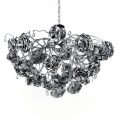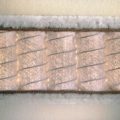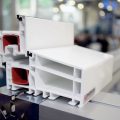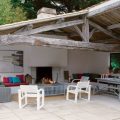Why it is necessary to "generalize" your wardrobe and how to do it correctly, says the fashionable stylist Alexander Rogov. Photo: Getty ImagesClassic female phrase: "I have nothing to wear" when overcrowded, says that you do not know your own wardrobe. So, it's time to put order in there. And do not just shift things with a neat little stack from one shelf to another, "overshooting" the mole, and carry out a quality audit and get rid of illiquid. As a rule, in any wardrobe you can meet anything: the favorite thing of youth, from the first date, things that have come out out of fashion, clothes that are not relevant to age, occupation, etc. But we store all this, because it's a pity to throw it away (they are still new!). And yet these "extras" fill the space in and lead to an absurd situation: there are many clothes, but nothing to wear. So, from what it is necessary to get rid of?
Photo: Getty ImagesClassic female phrase: "I have nothing to wear" when overcrowded, says that you do not know your own wardrobe. So, it's time to put order in there. And do not just shift things with a neat little stack from one shelf to another, "overshooting" the mole, and carry out a quality audit and get rid of illiquid. As a rule, in any wardrobe you can meet anything: the favorite thing of youth, from the first date, things that have come out out of fashion, clothes that are not relevant to age, occupation, etc. But we store all this, because it's a pity to throw it away (they are still new!). And yet these "extras" fill the space in and lead to an absurd situation: there are many clothes, but nothing to wear. So, from what it is necessary to get rid of?
- From things in spools;
- From the clothes that are in a prominent place stain or puff;
- From things that have gone out of fashion;
- From clothes bought for a case that never happened.
To facilitate the task, you need to decompose all things into three groups.
The first group - the basic things of the wardrobe
Basic things are individual for every woman,as she does. A student has one set of clothes, a business lady has another, and a housewife has a third. We are all different, we do different things, we have different interests, hobbies, the nature of our work and, accordingly, each of us has our own personal basic wardrobe. A business lady will have a set of pencil skirts, sheath dresses, fitted and not-so-fitted jackets - in general, classics. A housewife's base will consist of more comfortable and bright clothes: sweatpants, jeans, T-shirts, knitted tops, denim jackets, etc. Students' wardrobes can be more daring and varied, because they need to demonstrate what fashionistas they are. If you have defined a pencil skirt as a base, you know what you will wear it with, what it goes with, you feel comfortable in it, then on your next shopping trip you should get things that you already know how to wear. Another pencil skirt, but in some unusual color (bottle green, burgundy) or with some interesting detail - this is your first purchase. The same can be said about any thing: jeans, trousers, etc. Do not be afraid to duplicate basic things with some analogues (in a new fabric, with an unusual element or an unusual color).









